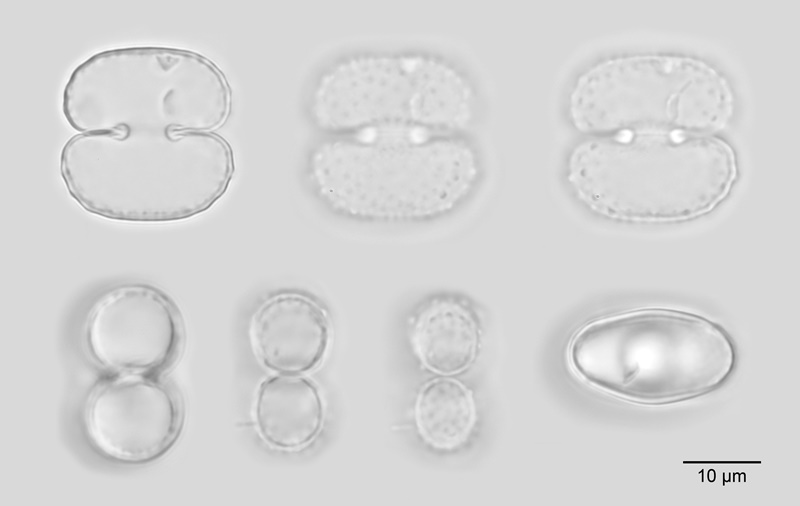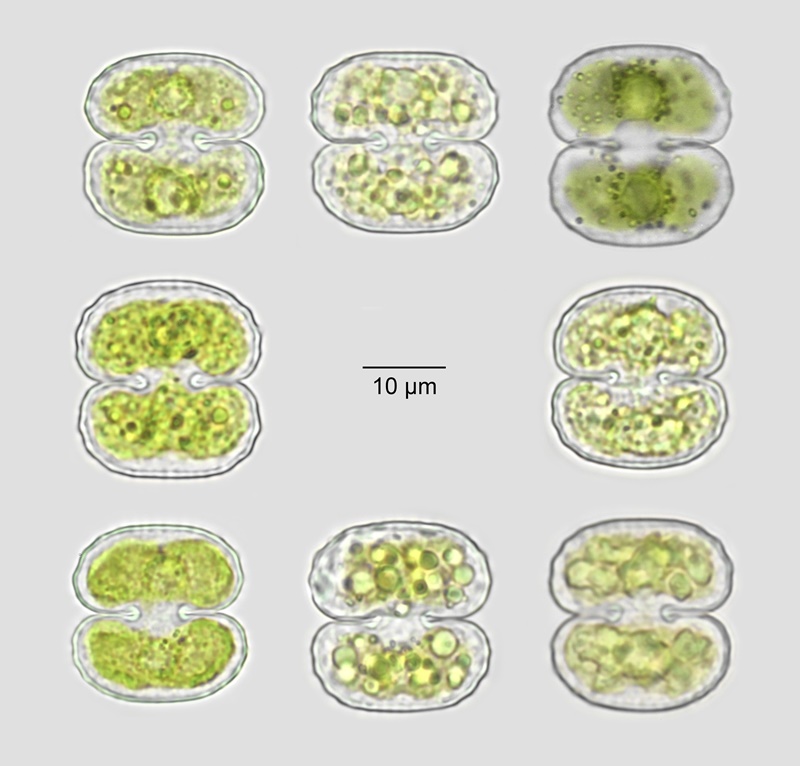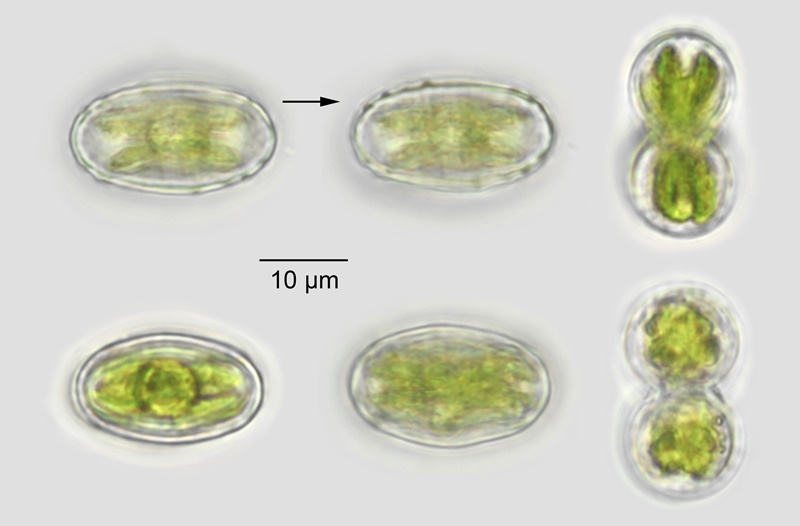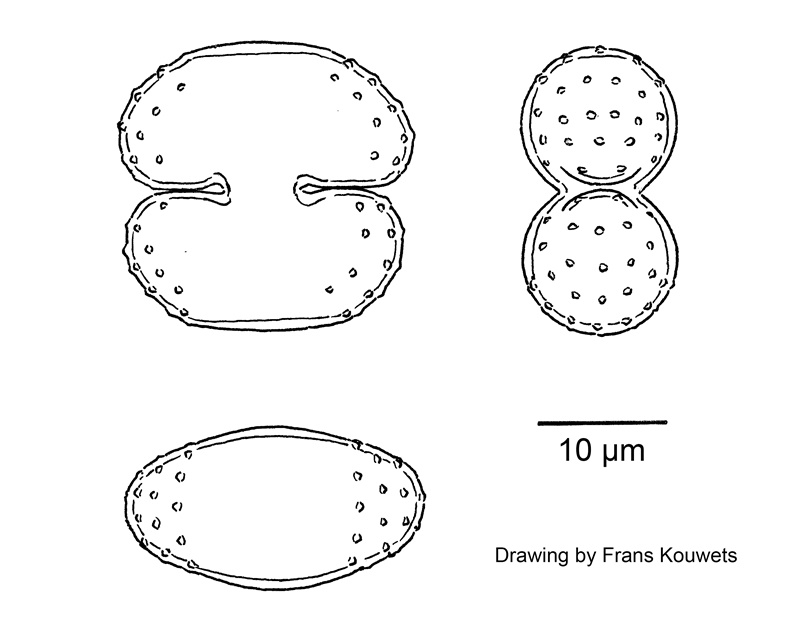Phylum: Charophyta Family: Desmidiaceae
Cosmarium tasiussaqense R. Lenzenweger 1989
Cells small, about as long as broad, the sinus has a dilate apex, then linear and closed for 60 percent of its length before opening widely. Semicells are trapeziform with broadly rounded basal angles. Each upper lateral angle is punctuated with four widely-spaced intramarginal granules, starting at the apical angle and finishing below the median line, giving an undulate outline. There would also appear to be a secondary series of granules running parallel (seen best in empty cells). The apex is smooth and slightly convex. Empty cells in face view show a series of fairly random pores. The broadest point of the semicells is close to the median line. Side view is orbicular; apical view is elliptic with slight side tumidity. Also in apical view, the eight intramarginal granules as seen in face view, are replicated on each side. Chloroplast axile with one central pyrenoid. Zygospore unknown.
Cell dimensions: L: 21.6-24.3 µm; B: 21.2-23.1 µm; Is: 6.2-7.5 µm; Th: 12.3-14.3µm; L/B: 0.96-1.11.
Complete taxonomic description: Cosmarium tasiussaqense.
References:
Johnson, C.D.N. ((2024). Cosmarium tasiussaqense R. Lenzenweger – rediscovered in the Outer Hebrides. Desmidiological Communications 12.
Kouwets, F.A.C. (2025). European Flora of the Desmid Genus Cosmarium. Part 1: Text. Part 2: Plates.
 Algae Outer Hebrides
Algae Outer Hebrides


